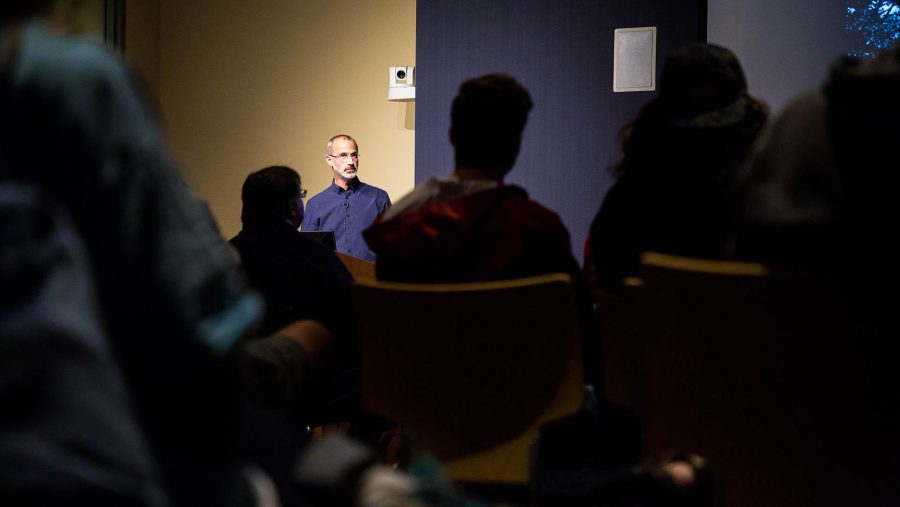Photographer David Ottenstein’s photos capture the last vestiges of Iowa’s bygone agricultural era in his new book, Iowa: Echoes of a Vanishing Landscape.
In a discussion at Prairie Lights, 15 S. Dubuque St., Ottenstein talked about his book with members of the community. This is his first book.
“It explores the transformation of the Iowa landscape from one based on the agrarian notion of the small, diversified farm to a landscape geared toward industrial-scale agriculture,” Kathleen Johnson of Prairie Lights said.
When Ottenstein first came to Iowa, he said, he didn’t really know what he was going to focus on and didn’t have any plans of publishing a book about what he would find.
“I came to Iowa to photographically explore the landscape and find out what was here based on the little bit that I had read … my fascination with this changing landscape and the remnants of all the old farming structures and beautiful landscape … led me to doing a book on it,” he said.
Wandering down gravel roads was Ottenstein’s main way of finding places to shoot, he said. He would find a place and ask the owners if he could take photos on their land. Almost everyone said yes, then pointed him toward other buildings that he might find interesting. Iowa’s rolling hills are another feature that Ottenstein said he really loves.
“I’ve become kind of an ambassador for Iowa, insisting when people who’ve driven across Interstate 80 across Iowa … they report back to me about how flat the state is, and I don’t get how they see that; even from I-80, one can see that Iowa’s really amazing,” he said.
RELATED: Senate tries to aid bankrupt farmers
Ottenstein noted most of the people he has met have some sort of connection to Iowa and its farming landscape. He said that farming seems to be in Americans’ blood, and everyone is connected to it somehow.
That landscape has been changing rapidly over the years, Ottenstein said. As farming becomes more industrial, old buildings and equipment have been cast aside and left to decay, creating sort of a graveyard for times past. He wanted to document these remnants before they disappear completely.
“The structures that we can still see, the farms, the farmhouses, the windmills, all these things to me have an inherent beauty and significance to who we are today,” he said. “But we’re at a point now, particularly in Iowa, where these things are really vanishing quickly … this is kind of the last of these things, and they are such an important part of our history, so I feel a need to continue to document them in my own vision,” he said.
Ottenstein also explained the technical aspects to his work. City High student Mark Krysan, who said he is fascinated by photography, said the meeting really helped him learn more about his passion and about the book’s subject.
“It was nice to learn so much and learn what the book was actually about,” he said.
The publishing of the book doesn’t close this chapter of his life, Ottenstein said.



